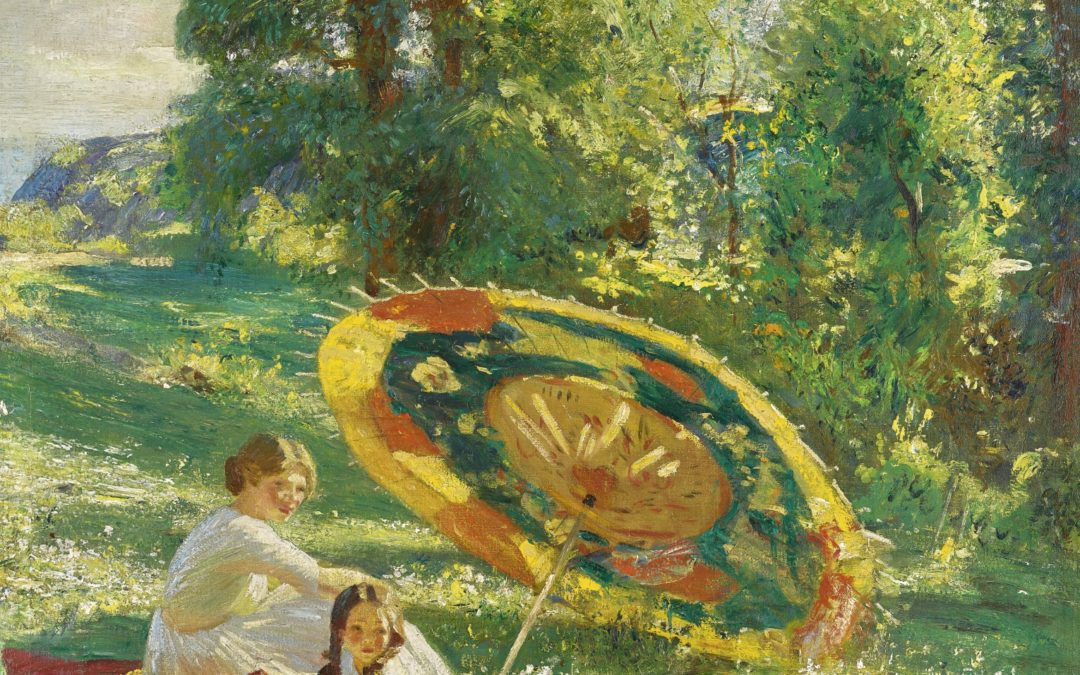 Georgina Battiscombe’s 1949 English Picnics is a pioneering study of English picnics in literature and art that has become a go-to standard. Battiscombe asserts the English picnicker “is a devotee of the simple life; for a brief moment, he apes the noble savage....
Georgina Battiscombe’s 1949 English Picnics is a pioneering study of English picnics in literature and art that has become a go-to standard. Battiscombe asserts the English picnicker “is a devotee of the simple life; for a brief moment, he apes the noble savage....
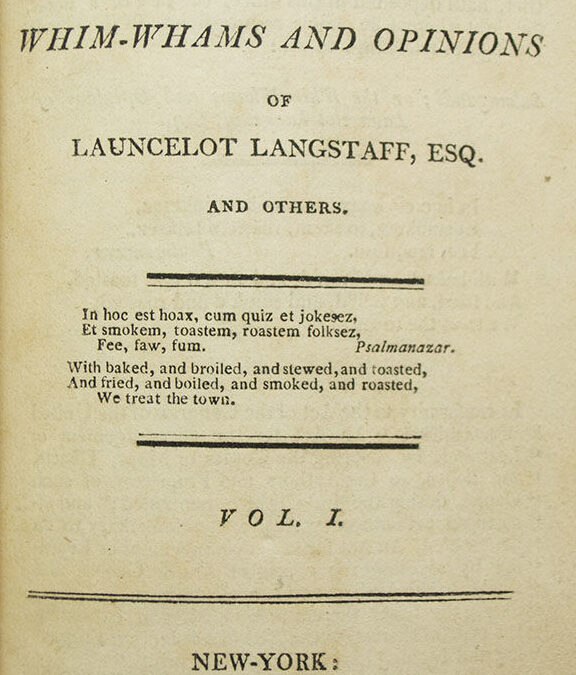 Being Anglophile and aware of London happenings, Irving probably picked up the aftermath of the Pic Nic Society scandal during his tour of Europe 1804-1806. The word stuck, but it’s used only once as an adjective to mean something silly. Under the heading “Fashions by...
Being Anglophile and aware of London happenings, Irving probably picked up the aftermath of the Pic Nic Society scandal during his tour of Europe 1804-1806. The word stuck, but it’s used only once as an adjective to mean something silly. Under the heading “Fashions by...
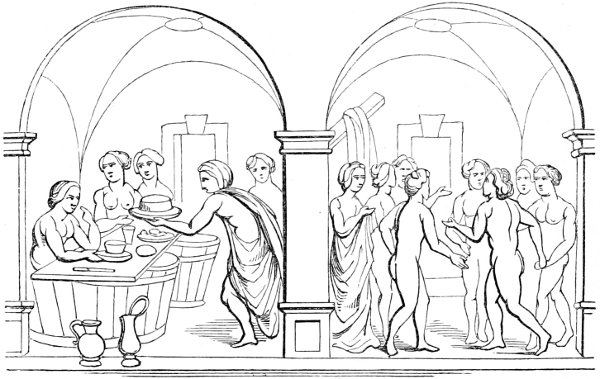 Thomas Wright found songs, now obscure, about women having meals in taverns and bathhouses that are suspiciously like picnics. He writes about this in The History of Domestic Manners and Sentiments in England, suggesting that sharing food and entertainment is common...
Thomas Wright found songs, now obscure, about women having meals in taverns and bathhouses that are suspiciously like picnics. He writes about this in The History of Domestic Manners and Sentiments in England, suggesting that sharing food and entertainment is common...
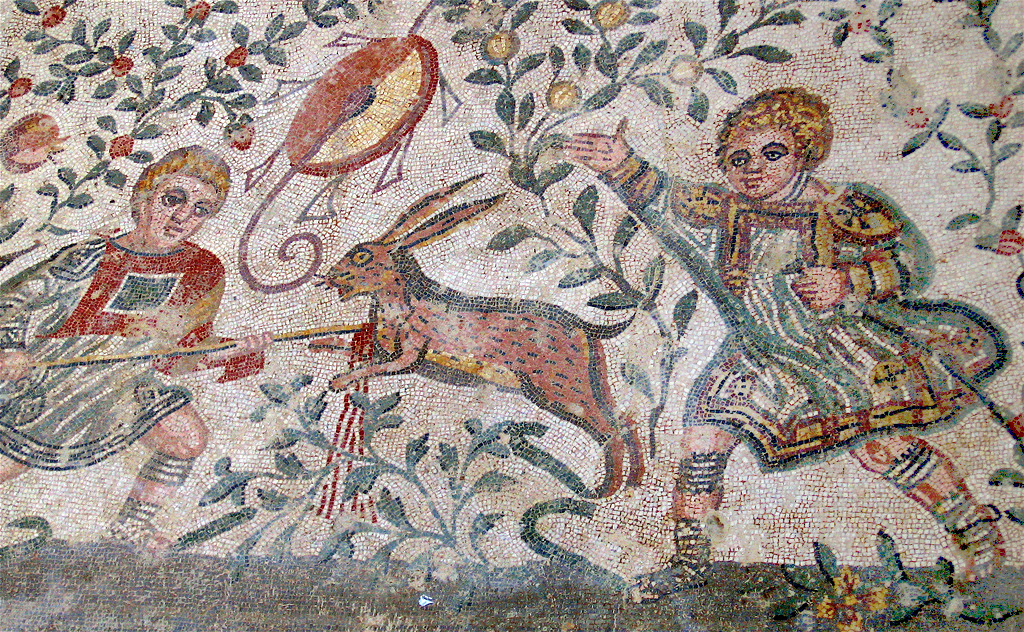 Hunting feasts have a long history. Among the Romans, one such by Philostratus Elder uses the rhetorical device of Ekphrasis, a verbal description of a visual representation, to illustrate a painting he observed in Naples. Ironically, none survive, if they existed at...
Hunting feasts have a long history. Among the Romans, one such by Philostratus Elder uses the rhetorical device of Ekphrasis, a verbal description of a visual representation, to illustrate a painting he observed in Naples. Ironically, none survive, if they existed at...
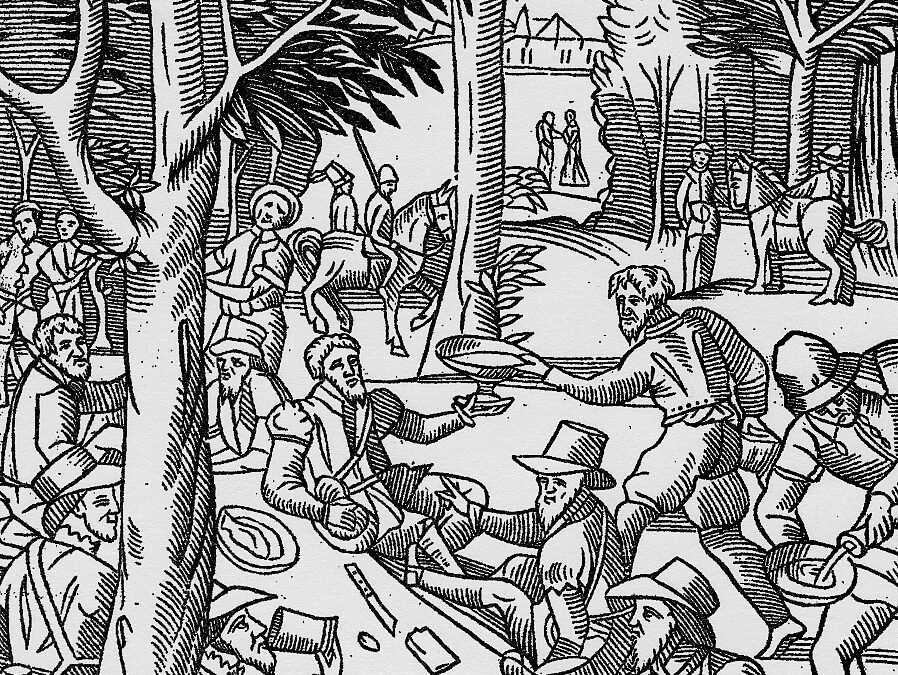 Fouilloux’s La Venerie, aka Hunting, differs from Gaston’s 1389 description (See Le livre de chasse). Accordingly, the assemblée is replaced with un repas chasse, a hunters’ lunch attended only by men. However, when George Gascoigne adapted La...
Fouilloux’s La Venerie, aka Hunting, differs from Gaston’s 1389 description (See Le livre de chasse). Accordingly, the assemblée is replaced with un repas chasse, a hunters’ lunch attended only by men. However, when George Gascoigne adapted La...
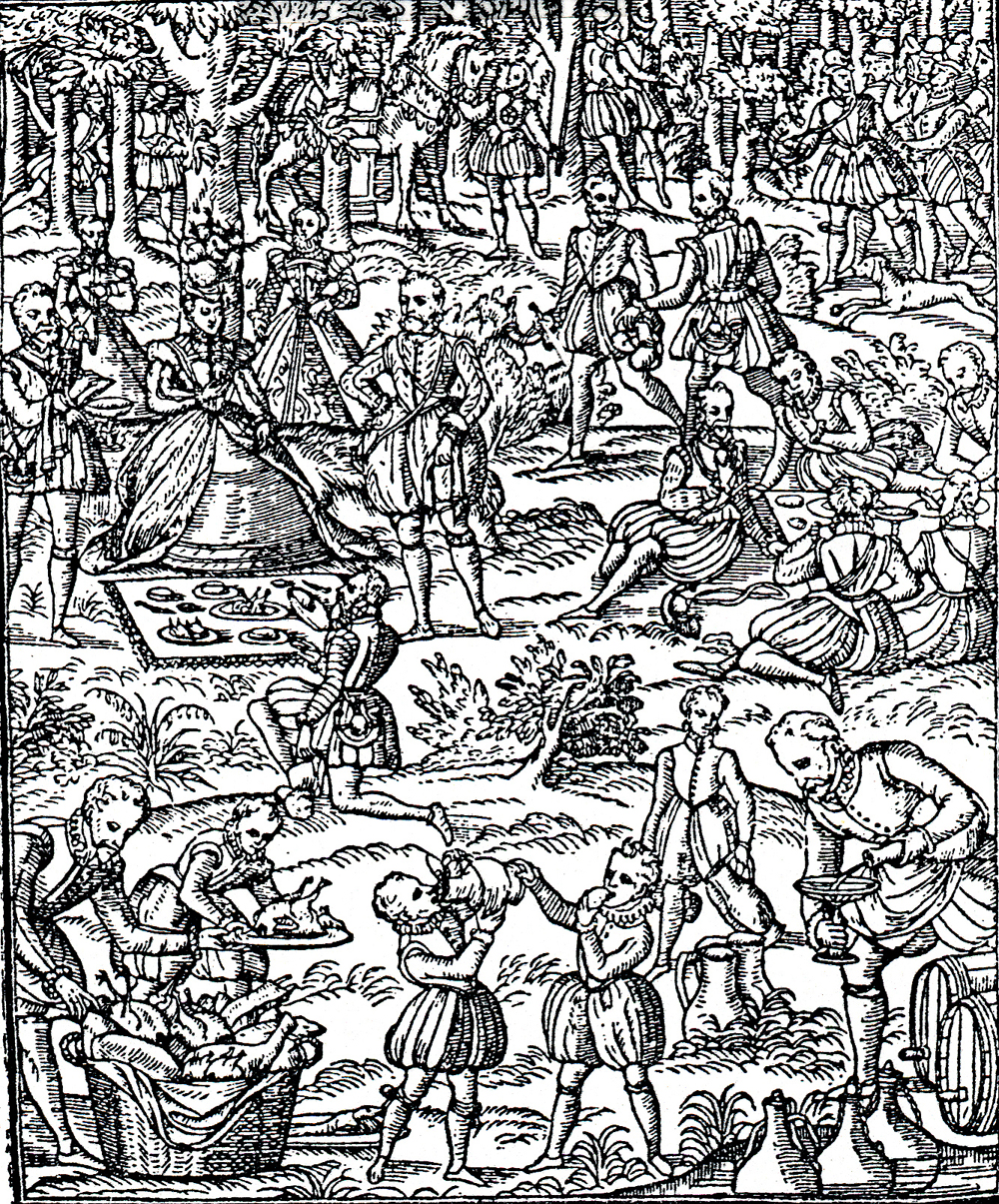 Gascoigne adapted Gaston Phébus’s The Book of the Hunt (1380) and Jacques du Fouilloux’s in La Venerie (1560) into English, retitling the work The Noble Arte of Venerie or Hunting (1575). (The book is dedicated to Lord Clinton, Elizabeth’s master of...
Gascoigne adapted Gaston Phébus’s The Book of the Hunt (1380) and Jacques du Fouilloux’s in La Venerie (1560) into English, retitling the work The Noble Arte of Venerie or Hunting (1575). (The book is dedicated to Lord Clinton, Elizabeth’s master of...
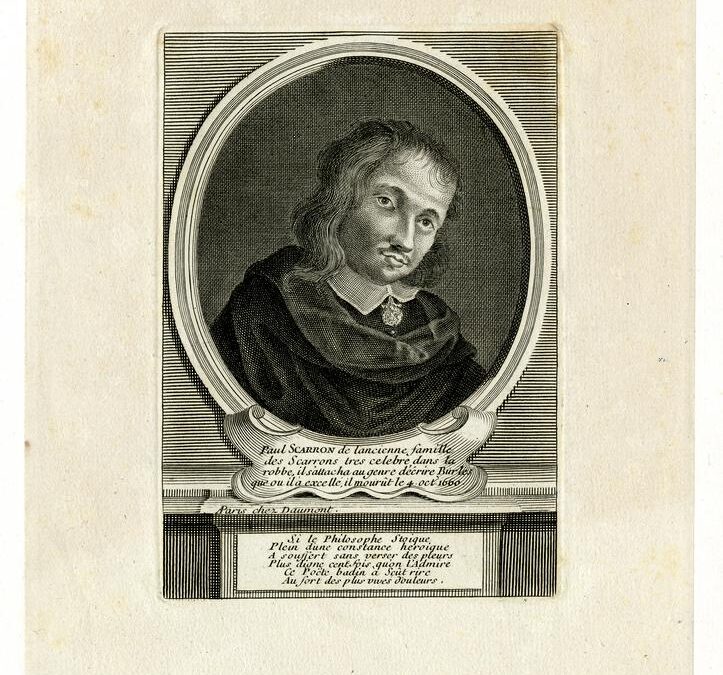 It is rumored that this is how the satirist Paul Scarron was known for his petits soupers, intimate dinners without ceremony, to which guests were invited to dine in the picnic-style, un repas dans le manière pique-nique. Oliver Goldsmith’s “Retaliation” (1774)...
It is rumored that this is how the satirist Paul Scarron was known for his petits soupers, intimate dinners without ceremony, to which guests were invited to dine in the picnic-style, un repas dans le manière pique-nique. Oliver Goldsmith’s “Retaliation” (1774)...
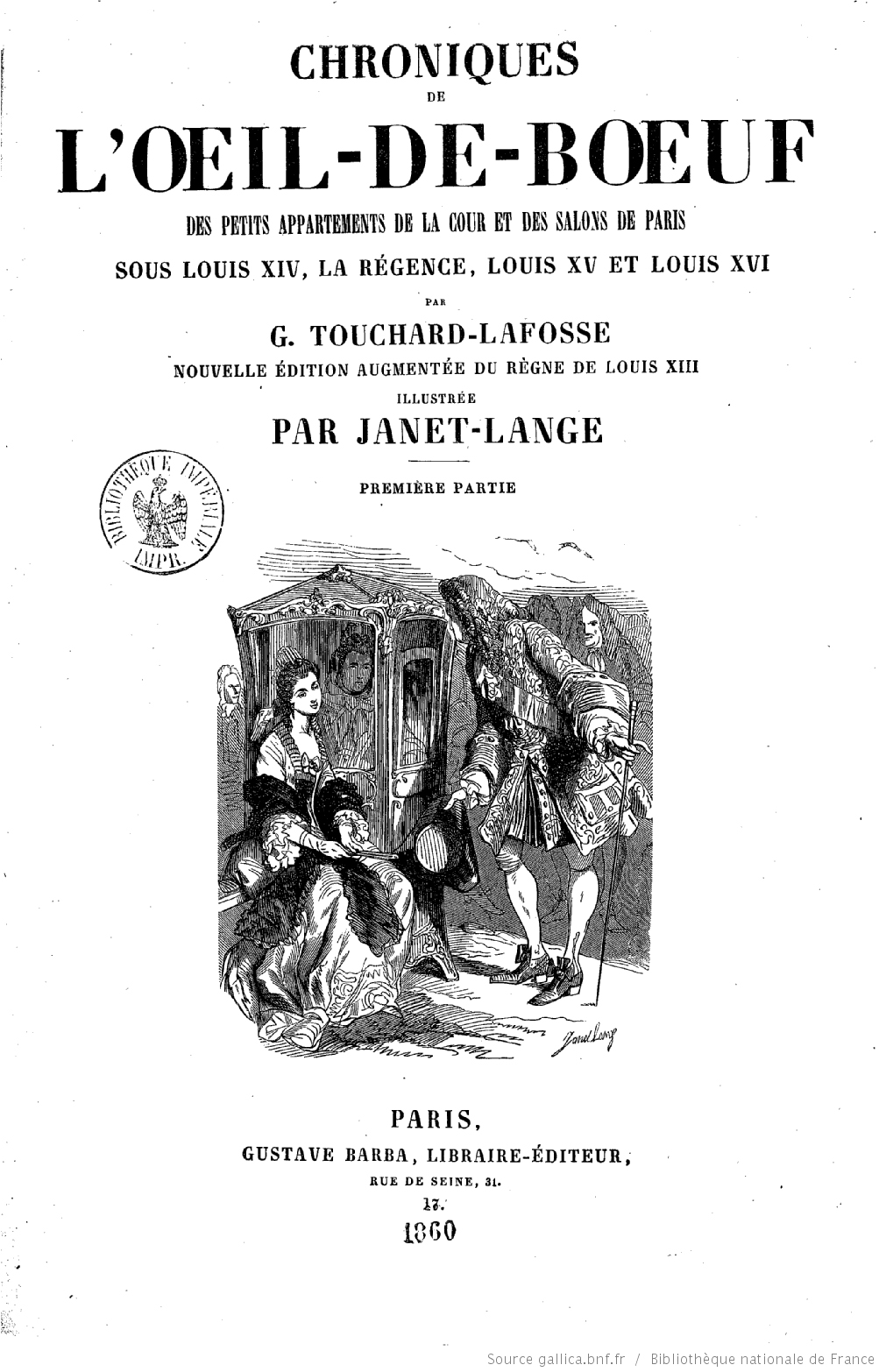 Oeil-de-boeuf is Touchard-Lafosse’s pseudonym used to sign off on his gossip reports about Louis XIV’s court and Parisian society Oeil-de-boeuf is a circular window, often indoors, above a doorway. As a metaphor, it suggests gossip that is sexually tinged or...
Oeil-de-boeuf is Touchard-Lafosse’s pseudonym used to sign off on his gossip reports about Louis XIV’s court and Parisian society Oeil-de-boeuf is a circular window, often indoors, above a doorway. As a metaphor, it suggests gossip that is sexually tinged or...
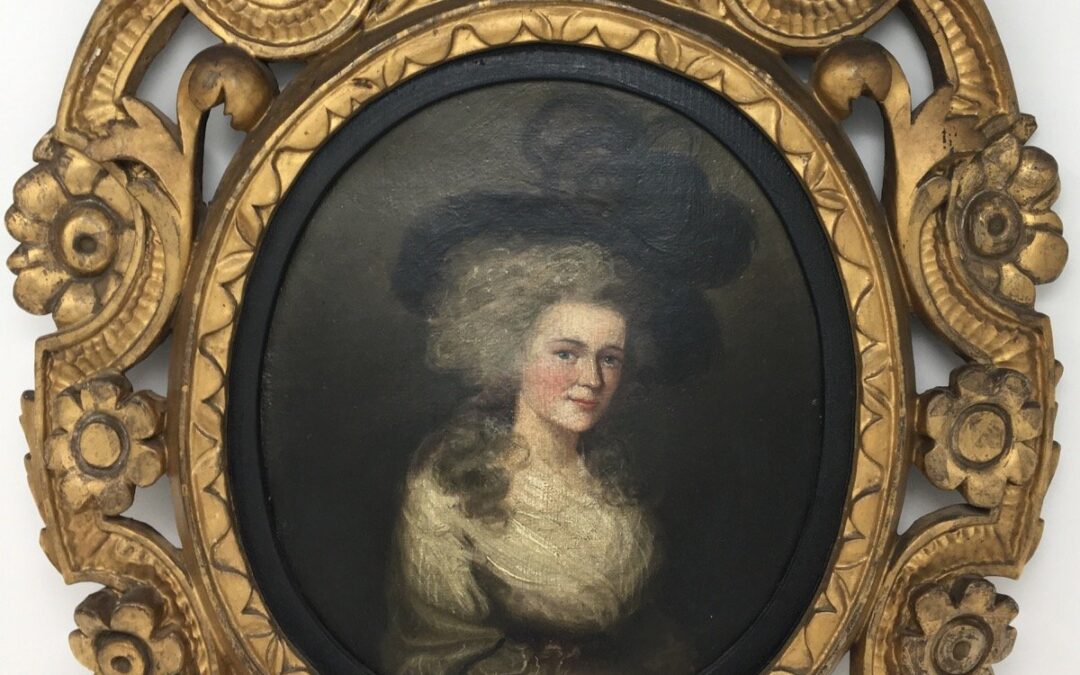 Stuart’s firsthand memories of the time that parallel Henry Angelo’s playful attitude towards the Pic Nic society. She attempts a comic attitude, that really masks her antagonism. “Its partisans, “she wrote in her journal, “might have been pursued to the stake or...
Stuart’s firsthand memories of the time that parallel Henry Angelo’s playful attitude towards the Pic Nic society. She attempts a comic attitude, that really masks her antagonism. “Its partisans, “she wrote in her journal, “might have been pursued to the stake or...
 As a passionate hunter, Brillat-Savarin enjoyed traditional midday luncheon trysts or haltes de chasse. he describes the gathering in “Meditation XV” in Physiologie du Gout, or The Psychology of Taste. According to French usage, the halte de chasse is not...
As a passionate hunter, Brillat-Savarin enjoyed traditional midday luncheon trysts or haltes de chasse. he describes the gathering in “Meditation XV” in Physiologie du Gout, or The Psychology of Taste. According to French usage, the halte de chasse is not...











